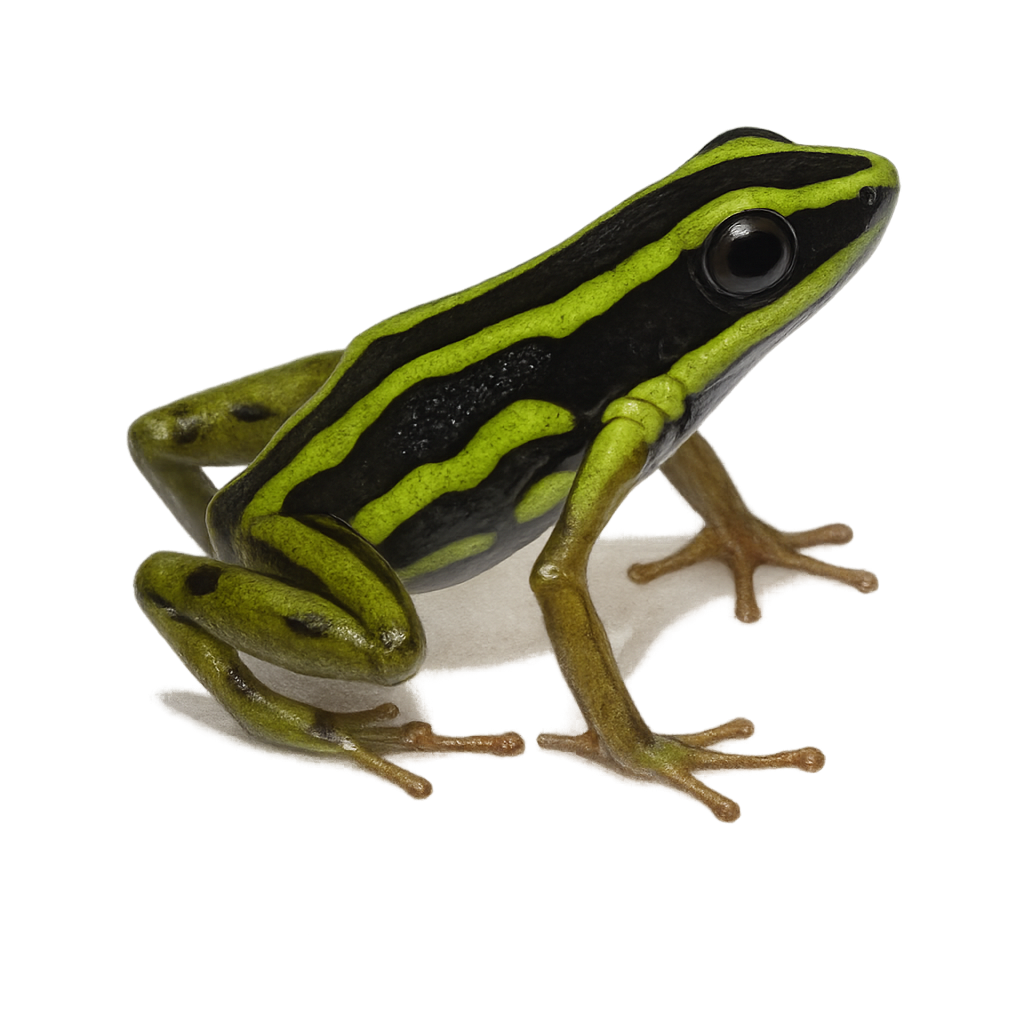Your wildlife photography guide.
Explore the yellow-bellied poison frog in detail, study its behavior, prepare your shots.
Where to observe and photograph the yellow-bellied poison frog in the wild
Learn where and when to spot the yellow-bellied poison frog in the wild, how to identify the species based on distinctive features, and what natural environments it inhabits. The WildlifePhotographer app offers tailored photography tips that reflect the yellow-bellied poison frog’s behavior, helping you capture better wildlife images. Explore the full species profile for key information including description, habitat, active periods, and approach techniques.
Yellow‑bellied poison frog
Scientific name: Andinobates fulguritus

IUCN Status: Near Threatened
Family: DENDROBATIDAE
Group: Amphibians
Sensitivity to human approach: Suspicious
Minimum approach distance: 2 m
Reproduction period: April to May
Incubation: 10–14 jours
Births: May to June
Habitat:
Tropical rainforests, riparian zones
Activity period :
Primarily active during the day, with peak activity in the morning and late afternoon.
Identification and description:
The Yellow‑bellied poison frog, Andinobates fulguritus, is a small, brightly colored frog native to the humid tropical forests of Colombia. Known for its striking yellow and black patterns, its skin serves as a warning to potential predators due to its toxicity. This diurnal species spends most of its time foraging for small insects and arthropods. It prefers humid, shaded habitats, often near streams. Despite its small size, it plays a crucial role in the ecosystem by regulating insect populations. Reproduction typically occurs during the rainy season, with males calling to attract females.
Recommended lens:
Macro – adjust based on distance, desired framing (portrait or habitat), and approach conditions.
Photography tips:
To photograph the Yellow‑bellied poison frog, approach discreetly to avoid startling it. Use a macro lens to capture the details of its colorful patterns. Ensure you maintain a safe distance of at least 2 m to avoid disturbing its natural habitat. Natural light is ideal for highlighting its vivid colors, so aim for shots in the middle of the day when light is abundant. Be patient and wait for the frog to move naturally to capture dynamic shots.
The WildlifePhotographer App is coming soon!
Be the first to explore the best nature spots, track rutting seasons, log your observations, and observe more wildlife.
Already 1 431 wildlife lovers subscribed worldwide

